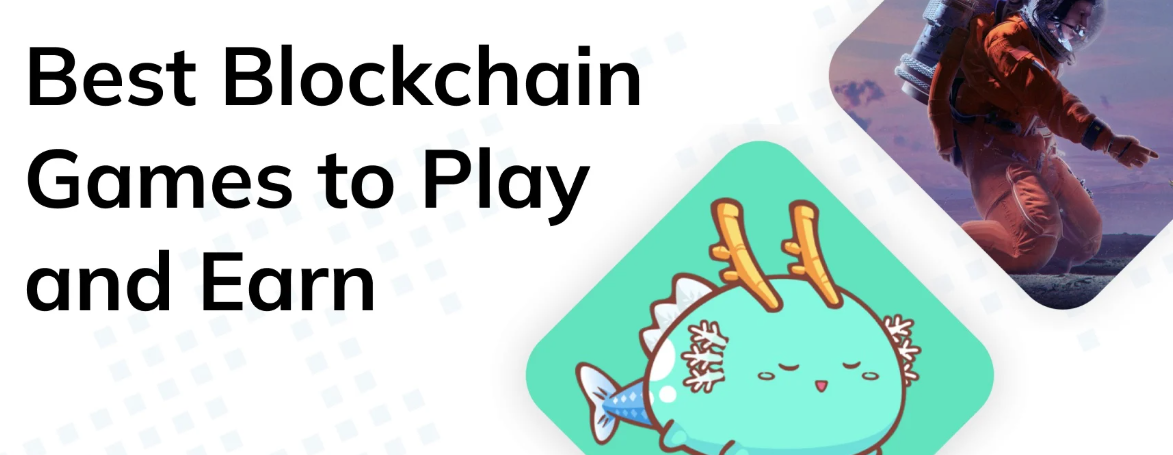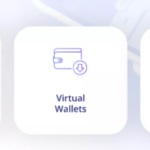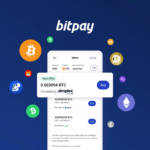In this article I will cover the Best Blockchain Games To Play And Earn focusing on some of the best games that offer quality entertainment along with satisfactory earning potential.
- Key Point & Best Blockchain Games To Play And Earn List
- 1.The Sandbox
- Pros & Cons The Sandbox
- 2.Axie Infinity
- Pros & Cons Axie Infinity
- 3.Decentraland
- Pros & Cons Decentraland
- 4.My Neighbor Alice
- Pros & Cons My Neighbor Alice
- 5.Upland
- Pros & Cons Upland
- 6.Star Atlas
- Pros & Cons Star Atlas
- 7.Alien Worlds
- Pros & Cons Alien Worlds
- 8.CryptoKitties
- Pros & Cons CryptoKitties
- 9.Big Time
- Pros & Cons Big Time
- Conclusion
- FAQ
These games span from virtual environments to collecting games enabling the gamers to possess digital properties, trade in NFTs, and earn cryptocurrencies all while having a good time, which is an optimal combination of gaming and innovation in the blockchain space.
Key Point & Best Blockchain Games To Play And Earn List
| Game/Platform | Key Point |
|---|---|
| The Sandbox | A voxel-based metaverse where users create, own, and monetize virtual experiences using SAND tokens. |
| Axie Infinity | Play-to-earn NFT game where players breed, battle, and trade fantasy creatures called Axies. |
| Decentraland | Virtual world powered by Ethereum, enabling land ownership, events, and digital commerce with MANA. |
| My Neighbor Alice | Multiplayer farming game combining casual gameplay with blockchain-based land ownership. |
| Upland | Property-trading metaverse mapping real-world addresses into NFT assets. |
| Star Atlas | Space-themed MMO metaverse with exploration, resource mining, and faction-based battles. |
| Alien Worlds | NFT-based metaverse where players mine resources, trade, and compete for planetary control. |
| CryptoKitties | One of the first NFT games, focusing on breeding, collecting, and trading unique digital cats. |
| Big Time | Action RPG combining time-travel adventures with NFT loot and player-owned assets. |
1.The Sandbox
The Sandbox combines creativity and monetization in a leading blockchain game set in a vivid metaverse. Players can build one-of-a-kind voxel experiences, claim ownership of virtual land, and earn rewards in V- Tokens and NFTs.
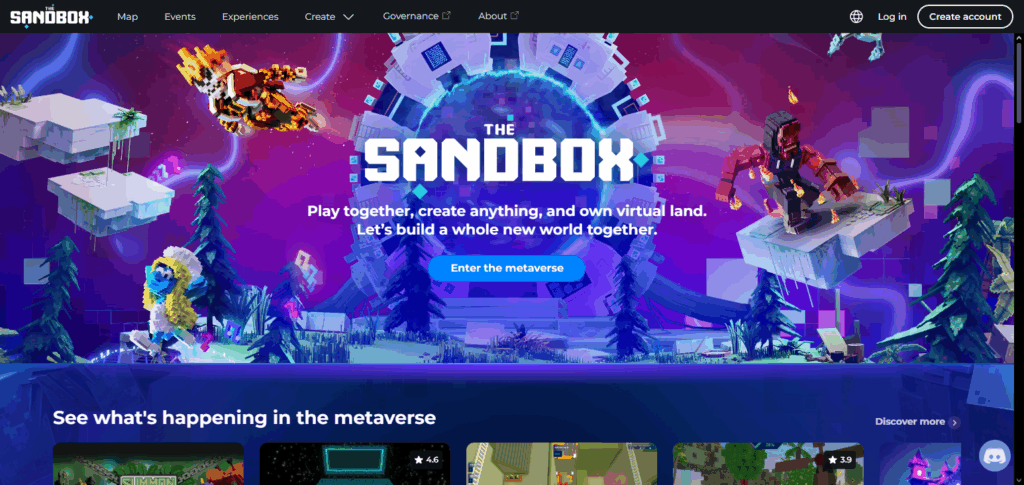
The game’s distinguishing feature, VoxEdit and Game Maker, equips players with the unique ability to create custom assets and sell them, empowering even those without substantive programming knowledge to do so. As a result of The Sandbox’s booming community and collaborations with conglomerates like Adidas, players can engage in unprecedented gameplay and receive tangible rewards.
Pros & Cons The Sandbox
Pros:
- User-generated monetization: Users can effectively gain SAND by creating experiences, NFT, or virtually leasing and selling land and assets.
- Strong ecosystem and brand partnerships: With Animoca Brands in the picture, game jams and partner integrations are continuously running, adding value and potential traffic.
- Passive income potential: Revenue can also be earned passively from the users by landowners and creators who attract users with their content or land titled.
Cons:
- High competition and required skill: Many projects compete for attention. Users who stand out as creators often need marketing and design skills.
- Speculative land value and volatility: The market for virtual real estate can be overhyped and suffer from volatility.
- Upfront investment for meaningful earnings: A considerable amount is often required to be spent upfront to earn quality builds or prime LAND parcels.
2.Axie Infinity
Axie Infinity is perhaps the most popular blockchain game in which players earn rewards in the form of SLP and AXS tokens by collecting, battling, and breeding cute creatures called Axies.
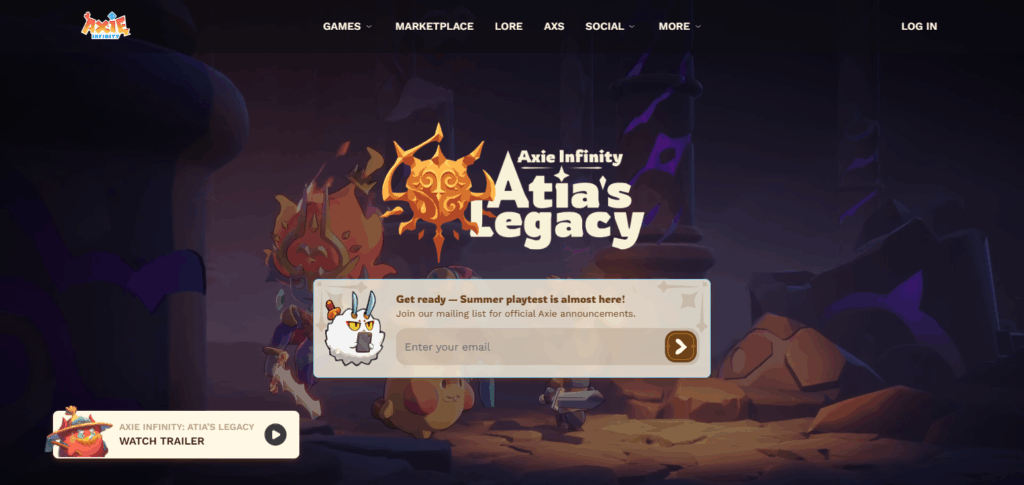
Its unique feature is the play-to-earn model which allows players to construct self-sustaining economies by trading Axies, which can be bought and sold as NFTs, and take part in strategic turn-based battles. Due to its strong community and ease of access, Axie Infinity is the best choice for blockchain gamers as it allows players to earn significant rewards while exploring a Pokémon-style world.
Pros & Cons Axie Infinity
Pros:
- Established play-to-earn economy: Users have been able to earn by participating in battles, breeding, and land activities for quite some time (AXS/SLP systems).
- Strong community and nostalgia-driven design: The drives behind community collaboration alongside the nostalgic Pokémon-based creature collection keeps engagement for users who are fans of pet-battler games.
- Layered economy with player ownership: Aside from the Axies/NFTs, the players possess, the Ronin sidechain mitigates gas costs relative to the mainnet Ethereum, making it smoother.
Cons:
- High barrier to entry (cost of Axies): During the peak of demand, the starter Axies teams are much harder to acquire, as they are hoarded.
- Economic instability/ token volatility: Earnings are highly volatile as they depend on token prices and historical crashes, like the SLP collapse, worsen the situation.
- Criticism about sustainability and labor dynamics: The long-term viability of the project is at risk due to allegations regarding cheap labor-based pyramid-structure incentives.
3.Decentraland
Decentraland is one of the leading virtual world blockchain games where users traverse the world, owning and customizing virtual land NFTs, and using MANA tokens. It is most remarkable for the community governance where users vote on platform changes, making updates player-driven.
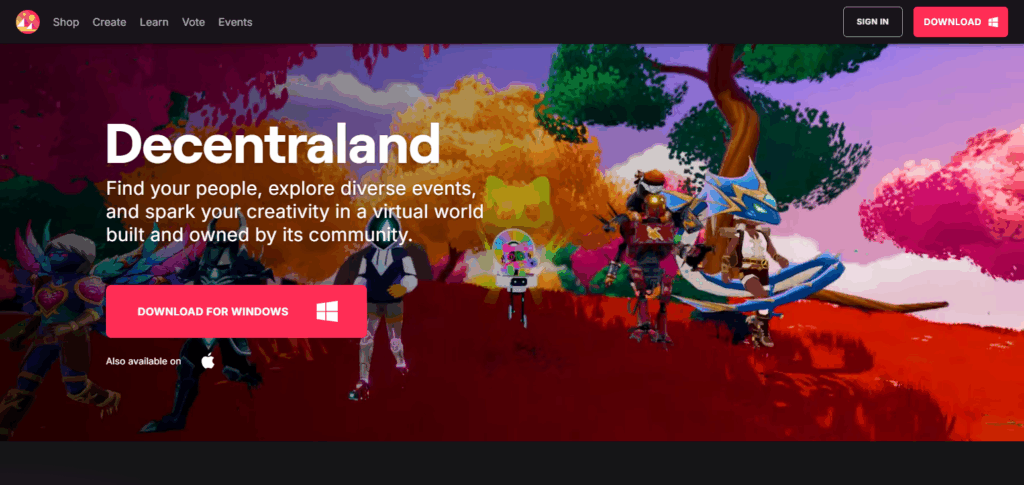
Users can create one-of-a-kind digital experiences and are able to make money off of a lively marketplace. There are one-of-a-kind opportunities to immerse yourself in a 3D world and explore, earn, and build a virtual world in a truly one-of-a-kind ever-evolving metaverse.
Pros & Cons Decentraland
Pros:
- Virtual real estate ownership: Users are able to purchase, develop, lease, or trade LAND NFTs and generate profits through ad-based events, shops, or real-estate within.
- Social & event-driven engagement: Allows users to host concerts or exhibitions through effective user engagement strategies to boost traffic to their monetized areas.
- Decentralized governance: Users with MANA have powers to participate in the governance of the platform.
Cons:
- Sparse user density / “empty” areas: The lack of monetized areas stagnates revenue in areas deemed “empty” resulting in poor foot traffic and ROI.
- Speculative and volatile investment: Unpredictable LAND and MANA prices fluctuations add to the uncertainty in profits and valuation of the asset.
- Learning curve for effective monetization: Incomes from ownership require community building, marketing, and often community cultivation.
4.My Neighbor Alice
My Neighbor Alice is an interesting blockchain game that enables players to construct and develop virtual islands within the Lummelunda Archipelago while earning ALICE and BJORN tokens through various quests and crafting activities.
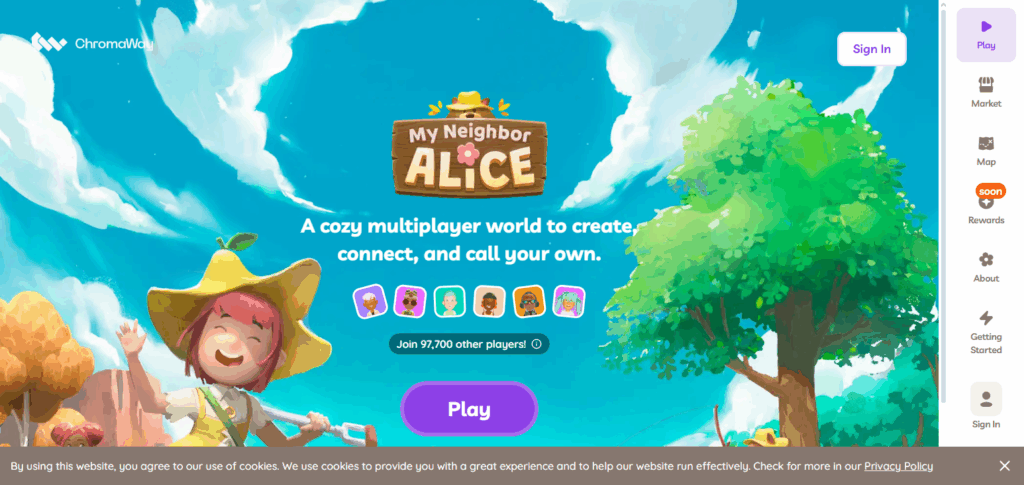
Its distinct advantage is the smooth addition of the companion app Alice’s Wardrobe, which enables players to change the avatars conveniently. In addition to passive farming and fishing, the game includes active community-driven NFT trading, offering a relaxing game experience while earning rewards.
Pros & Cons My Neighbor Alice
Pros:
- Relaxed and accessible gameplay: It aims to draw in non-crypto players using an Animal Crossing style farming sim to ease onboarding.
- Marketplace driven by players: Participants can earn indirectly through ownership and trade of in-game items and land.
- Ongoing development with active community (2025 presence): Community activity and new guides indicate ongoing development and support.
Cons:
- Entry barrier for land & token value: Gaining access to more advanced gameplay can be gated by expensive land and asset purchases.
- Integrating blockchain with gaming for non-crypto enthusiasts: Elements of Web3 could be puzzling or off-putting for non-crypto players.
- Slow pacing and user experience problems: Some users have reported minor annoyances with slow crafting and interaction speeds.
5.Upland
Upland distinguishes itself within blockchain gaming as players engage in purchasing, selling, and trading virtual properties tied to actual locations, earning UPX and USD through NFTs.
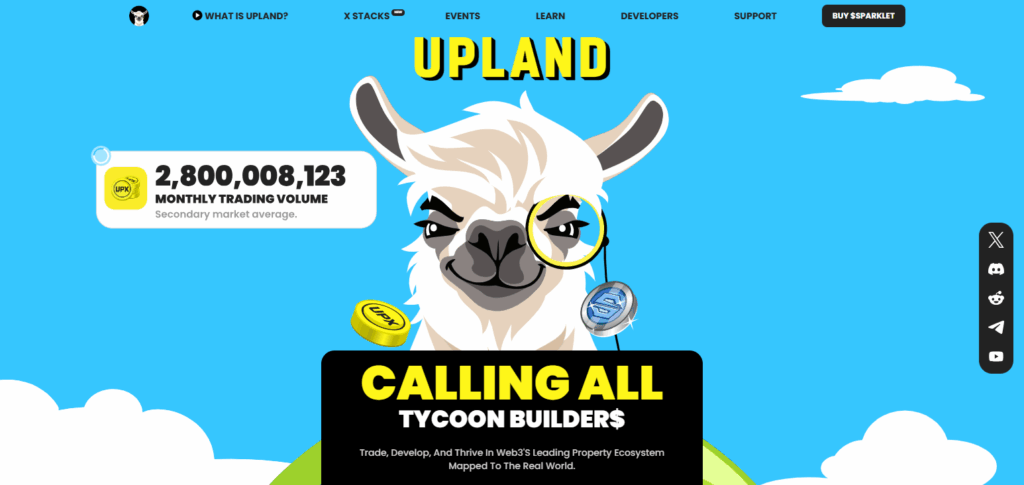
A major highlight is the integration of fiat through Tilia Pay, which streamlines the cashout process enabling direct transfers to PayPal, sidestepping the need for crypto wallets. From treasure hunts to an expanding metaverse, Upland weaves together real estate strategy within a puzzle and play-to-earn ecosystem, welcoming and rewarding players of all skill levels.
Pros & Cons Upland
Pros:
- Mapping the real world: Intuitive appeal and collection for virtual properties at real addresses.
- Diverse ways to earn: Collect rents, real estate flipping, metaverse events, and business construction.
- Low technical barrier is browser-based: No need for powerful/expensive hardware is a barrier to slow entry, and casual-focused onboarding is gamified.
Cons:
- Limited liquidity / regional saturation: High competition within popular regions can compress returns; flipping is demand-dependent.
- Earnings tied to platform activity: Passive income is earned but stagnant income earning activities can become in active due to user engagement, income earning activities, or traffic.
- Perceived gamification over real value: Some critiques frame it as more of a virtual collection game than a robust investment which invites some speculative actions.
6.Star Atlas
Star Atlas ranks among the best blockchain games located in the 2620 metaverse, featuring exploration, trade, and conquest while utilizing the ATLAS and POLIS tokens on the Solana blockchain. The most distinct aspect of the game is the open-source F-KIT, which allows developers to merge Solana with Unreal Engine 5, fostering ecosystem innovation.
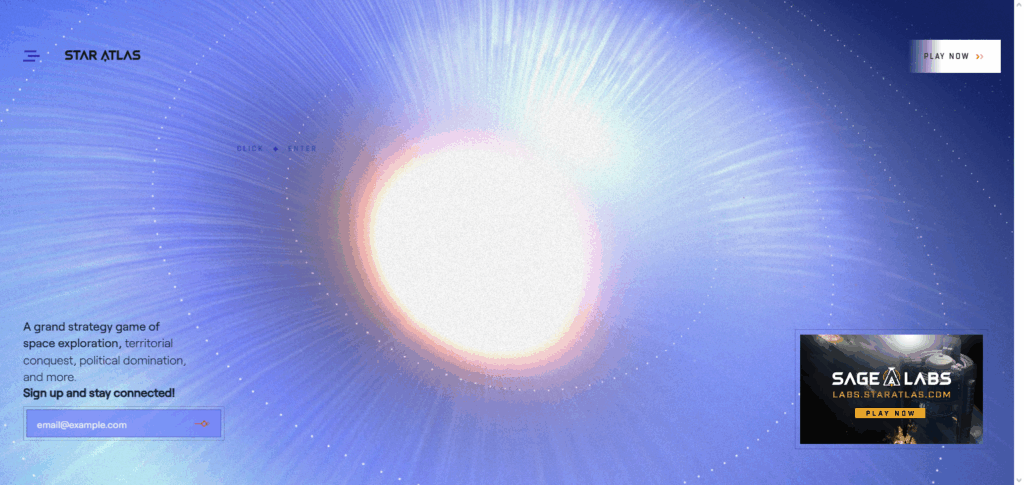
Star Atlas bolster breathtaking graphics, assets based on NFTs, and an economy governed by players which promises exhilarating space adventures and earns lucrative rewards, shifting paradigms in blockchain gaming.
Pros & Cons Star Atlas
Pros:
- Ambitious, AAA-style space metaverse: High production values are coupled with strategy, exploration, and an economic simulation on the Solana blockchain.
- Dual-token & faction driven economy: Multiple playstyles (faction influence, resource control) result in earning through contribution and ownership.
- Ongoing content expansion, for example random story encounters: Active roadmap indicates additional features that will further engagement and value creation.
Cons:
- Complexity and long horizon: New players might struggle to grasp the depth of the systems, which requires some investment of time to learn the mechanics.
- Still maturing economy: Parts of the metaverse and liquidity might still be in a transitional phase, and some features are hinted but not fully realized.
- Dependence on broader crypto/market sentiment: The ambition makes it very sensitive to the Solana ecosystem and the onboarding of new players.
7.Alien Worlds
Alien Worlds stands out as one of the prominent games in the blockchain gaming sphere where players mine Trilium (TLM) as well as NFTs in a metaverse set across six planets and get rewarded.
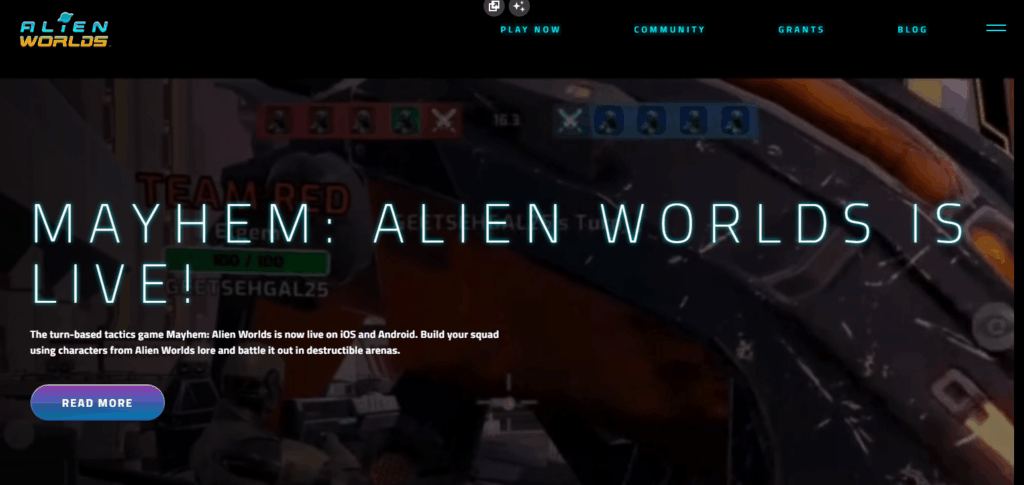
One of the game’s distinctive aspects is the dynamic cross-chain bridge that enables TLM transfer from and to WAX, Ethereum, and Binance Smart Chain, offering players more flexibility. Participating in missions, exercising governance, and trading NFTs enables one to actively contribute to the economy, which is one of the reasons that makes Alien Worlds so appealing, along with the accessible and engaging gameplay.
Pros & Cons Alien Worlds
Pros:
- Passive mining and free-to-play model: Players can begin mining Trilium (TLM), which encourages a wider player base and active participation.
- Cross-chain support (WAX, BNB, Ethereum): Wider reach and more flexibility in asset interaction.
- Active user base and DAO mechanics: Engagement goes beyond mining with basic DAO-enabled governance on planets, introducing staking and strategic choices.
Cons:
- Increased rivalry and reward dilution: A large user base can be a double edged sword, many users can mean decreased rewards unless optimized with better tools or strategy.
- Simple gameplay loop: The main activity, which is mining, can become monotonous, limiting long-term retention without additions and upgrades.
- Inconsistent reward structures and complex governance: Income predictability is disturbed due to value swings and DAO decisions on TLM, causing complex governance issues.
8.CryptoKitties
CryptoKitties is one of the first blockchain games where participants can breed, trade, and collect unique kittens, which are NFTs, and are stored on the Ethereum blockchain. Players earn through selling on the marketplace.
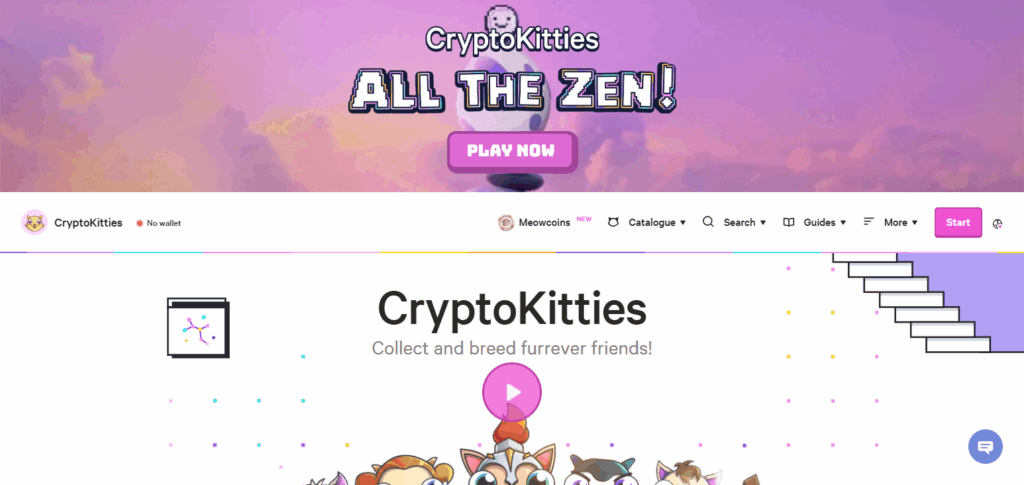
The best part is the genetic breeding algorithm which makes more than 1 kitty with amazing traits and the treatment of the llamas can be extremely profitable. The addition of a community makes the value of the game increase like a stock market as it also fuels the more, front-loaded, the lower the value of the NFTs. The Ethereum world fuels fun collecting with scheming are, in one-word, cute.
Pros & Cons CryptoKitties
Pros:
- Pioneer status: The historical importance of being one of the first blockchain games contributes to brand and recognition which creates a collector base.
- Collectible and simple to play: The mechanics of breeding and accumulating Pets is simple and appealing to casual users.
- Users have true digital ownership: Every Kitty can be considered an NFT with its history and can be sold in secondary markets.
Cons:
- 2025 hype stagnation: The lack of mainstream attention is due to more engaging mechanics and economies of newer P2E games.
- Limited active earning avenues: Other than breeding and selling, there is hardly any repetitive gameplay to earn continuously.
- Ethereum gas costs (historically): Transactions could have been costly, especially during older peaks, but there is limited layer-2 workaround support.
9.Big Time
Big Time is an exceptional MMORPG on the blockchain where gamers earn $BIGTIME tokens and NFTs while battling through time in dungeons that are procedurally generated. Its distinct offering is the Vault technology, which simplifies the trading of NFTs, allowing for crypto wallet-free trading.
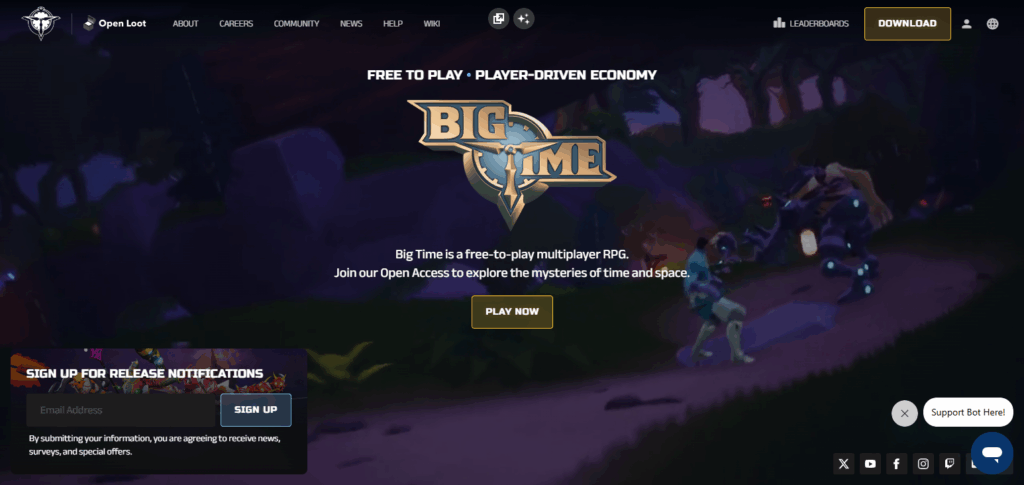
This enhances security and convenience. Incorporating amazing graphics, class-switching using Pocket Watches, and a free economy, Big Time is an AAA game that seamlessly integrates play-to-earn features within a vibrant metaverse, offering awe-inspiring adventures and immersive experiences blended with earning prospects.
Pros & Cons Big Time
Pros:
- High-quality, free-to-play action RPG: Incorporating blockchain into gameplay enhances both quality and accessibility, as it has no pay-to-win elements and offers NFT loot.
- Player-driven economy & flexible progression: In-depth and proprietary “Pocket Watch” class system and crafting/trading add to player control and progression.
- Active development with measurable traction: Expected as a leading Web3 MMORPG by 2025, with strong transaction volume and revenue.
Cons:
- Still relatively young / evolving liquidity: Long-term price discovery is improving for items and tokens in the marketplace.
- Sustained player engagement: Confidence in a stagnant pool of active users to demand loot and engage with the economy is essential for earnings.
- Newcomer complexity: Engaging in the time travel, class, and tokenomics intertwining requires some initial investment before being able to efficiently earn.
Conclusion
To summarize, The Sandbox, Axie Infinity, Decentraland, My Neighbor Alice, Upland, Star Atlas, Alien Worlds, CryptoKitties, Big Time, and MetaSpins offer blockchain games that transform the industry as they fuse fun-filled gaming with the aspects of earning.
Every game has a distinct characteristic, such as easy-to-use design applications and crypto and fiat currency interchangeability, creating robust economies utilizing NFTs and tokens. In 2025, these games will remain the undisputed leaders to offer captivating and enriching gaming-to-earning opportunities as they enable players to make, trade, and earn in the virtual worlds.
FAQ
What are play-to-earn (P2E) blockchain games?
P2E blockchain games allow players to earn real-world value, such as cryptocurrencies or NFTs, through gameplay. Built on blockchain technology, these games ensure transparency, security, and true ownership of in-game assets, which can be traded or sold on marketplaces.
Why are blockchain games popular for earning?
They combine entertainment with financial incentives, letting players monetize skills and time. Assets like NFTs and tokens have real-world value, creating sustainable economies where players can earn through quests, trading, or governance.
What makes The Sandbox a top P2E game?
The Sandbox lets players create and monetize voxel-based worlds using SAND tokens and NFTs. Its intuitive VoxEdit and Game Maker tools enable anyone to design assets without coding, fostering creativity and earning potential.



